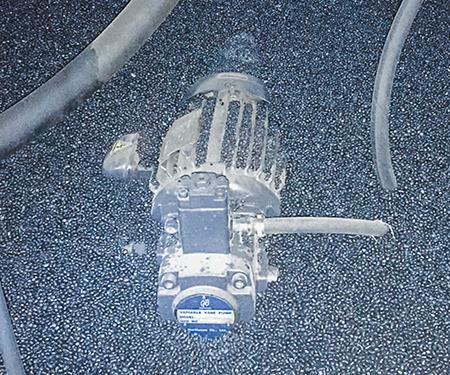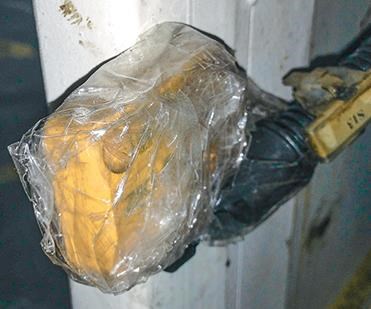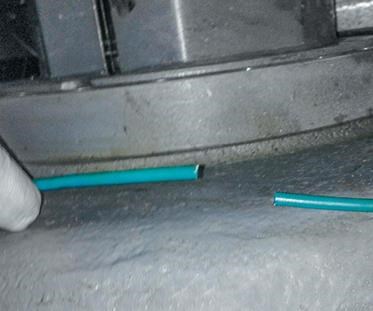A Service Engineer’s Guide to Boosting Molding Machine Productivity
Consider these tips from a technician who’s visited about 4000 plants over a 40-year span.
No one offers a better overall view of injection molding plants and how machines are maintained than our industry’s field-service engineers. In nearly 40 years of providing service to injection molders, for instance, I’ve been in about 4000 injection molding facilities.
There have been a myriad of changes in plants over the years, yet it’s amazing how much remains unchanged. Field-service engineers encounter the same conditions and answer the same repair questions year after year when it comes to machine maintenance—or the lack thereof.
At the risk of repeating advice you have heard before, plant managers, supervisors, setup technicians, machine operators, and maintenance managers need to be reminded of the simplest ways to maximize the productivity of their injection molding machines.
THE FIGHT FOR MACHINE TIME
In most molding plants, the production manager and the maintenance manager conduct an ongoing fight for machine time. Since production generates revenue and maintenance is considered overhead, maintenance often loses this battle. Routine maintenance on molding machines is slighted due to production requirements—until, that is, the machine breaks down.
Plant managers would be well served to think of maintenance in a new way—as a profit center. Consider this: A well-maintained, fast-running machine may save seconds of cycle time and contribute to your profitability. You’d be wise to follow these four simple recommendations:
1. Have one person on your team dedicated to visually checking each machine in your plant daily using a check list. This daily visual check can save you thousands of dollars in maintenance costs by catching a problem early. Assign a different person for each day of the week. This way, everyone is trained and each person brings a fresh set of eyes to the machines.
2. Dedicate four to five hours quarterly to a maintenance checkup for each machine. Think of it as a “mini-spa” visit. Machines are not that different from people and need a break from constant running. Give it a little extra care and the machine will come back renewed and ready to work.
3. Also like people, each machine needs an annual checkup. One full day of maintenance is the minimum required to give your machines a thorough exam to identify and head off potential problems, make machine-setting adjustments, and replace wear parts.
4. Take advantage of every available training opportunity from your machine supplier. The deeper the understanding of your machine’s operation and control system, the more productivity you will gain from the machine.
PM IS KEY TO PRODUCTIVITY
Field-service engineers like to see highly managed plants with systemized maintenance routines. If your plant isn’t there yet, there are minimum steps molding machine suppliers recommend. These are easy to conduct yet often neglected in many plants.
• Every day, take a look at your oil filter to make sure it is clean. Yes, machines have electronic and mechanical indicators to alert when a filter change is needed, but stay in front of this. Just like a car, keeping valves clean and free of contaminants is the easiest and most important preventive-maintenance action you can take. Given that a new servo valve may cost between $5000 and $10,000, a new filter is cheap in comparison.
• Conduct a daily visual inspection of all machine safeties—electrical, mechanical and hydraulic. Risk management on this front costs nothing but can prevent injury or even save a life.
• Inspect machine hoses on a weekly basis. If a hose ruptures, the machine will shut down and you will have a mess to clean up. Run your hand along the hose to find the start of any bubble. Feel for weak or wear spots or signs of leakage at crimp points. This is an indicator that your hose is at the end of its life cycle. You’re going to want to put it off—but don’t. Take the time to replace that hose before the start of the shift.
• Inspect machine cylinders weekly. Look for leakage at gland seals or the head seals (pistons). Make sure that the cylinder rod is pulling straight, operating in parallel with other components, and that there is no friction.
• Each quarter, verify that your incoming power lines are tight at the main breaker of the machine. Loose power lines lead to overheating, breakdown of the breaker, and could possibly lead to a fire. While you’re at it, check the heater circuit of the machine. Make sure that when the machine setpoint reads 400 F, it is in fact 400 F. You’ll spare yourself processing problems by keeping this functionality accurate.
• Machines need to have manual lubrication points greased quarterly. Every movable part of the molding machine—die height, guide rails, injection (thrust) bearings, etc.—want a touchup to stay healthy. The consequences of neglecting this simple task are expensive, such as destroyed linkage kits on a toggle machine, costing your operation thousands of dollars in repair along with extended downtime.
• Nozzle alignment is another important quarterly check that can forestall processing problems. Make sure the injection stops are adjusted for left-to-right alignment and the injection base or carriage is at the right height to align the nozzle from top to bottom. This will help forestall resin leakage at the nozzle and material blowback across the injection-unit barrel, which is a pain to clean up.
• Be seasonably aware. Your plant’s layout may give your machines the symptoms of seasonal affective disorder that changes processing requirements. For example, dock doors opened in winter months will affect processing temperatures on machines located near the dock. In the summer, hotter and more humid weather may require increasing the temperature of water supplied to the tool to prevent condensation on the tool and water lines.
• Assign one person as the in-house expert for a particular machine control. Then give that operator time to explore the control in depth so that every bit of the power of that control is utilized to make the most out of the machine’s capability. Today’s plant environment is daunting for workers from a controls standpoint, given that most plants have multiple machine brands and different generations of machines and controls. Service technicians field dozens of phone calls each day, the majority of which are questions regarding machine control screens.
• When customers call for field service on their machine, they are in a tough situation and under stress. Most service departments are staffed with people that have a desire to help and want to get machines up and running as fast as we can. Truth to tell, many field-service techs have a hero complex and love to solve your problems. They enjoy the “aha” moment when we figure out what is happening with the machine.
• Give feedback. Ask questions. Work with your field-service technicians in a positive way, and they’ll be sure to maximize the benefit of having them into your plant and strive to contribute to your machine productivity.
Related Content
Best Methods of Molding Undercuts
Producing plastics parts with undercuts presents distinct challenges for molders.
Read MoreHow to Mount an Injection Mold
Five industry pros with more than 200 years of combined molding experience provide step-by-step best practices on mounting a mold in a horizontal injection molding machine.
Read MoreHow to Select the Right Tool Steel for Mold Cavities
With cavity steel or alloy selection there are many variables that can dictate the best option.
Read MoreKnow Your Options in Injection Machine Nozzles
Improvements in nozzle design in recent years overcome some of the limitations of previous filter, mixing, and shut-off nozzles.
Read MoreRead Next
Beyond Prototypes: 8 Ways the Plastics Industry Is Using 3D Printing
Plastics processors are finding applications for 3D printing around the plant and across the supply chain. Here are 8 examples to look for at NPE2024.
Read MorePeople 4.0 – How to Get Buy-In from Your Staff for Industry 4.0 Systems
Implementing a production monitoring system as the foundation of a ‘smart factory’ is about integrating people with new technology as much as it is about integrating machines and computers. Here are tips from a company that has gone through the process.
Read More































